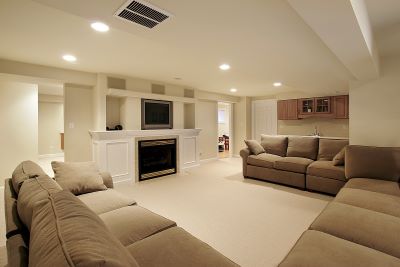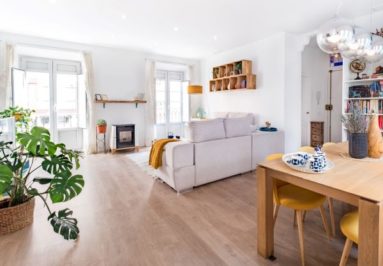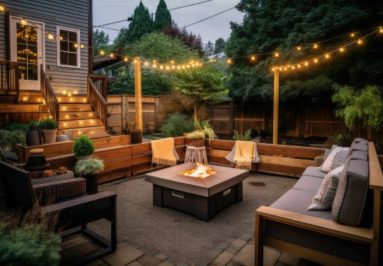Do you have a finished basement in your house? Basements are often used as a hangout spot for kids, entertainment room, or additional living space. If you use your basement for any of the above, there’s probably a lot of noise coming from that area of your house. Noise leaking out of the basement can disrupt the rest of the home, but that can be easily combated with these soundproofing tips!
How to Soundproof a Basement
If you mainly use your basement for entertainment, chances are you’ll need some level of soundproofing. Whether it’s the parent’s turn or the kid’s turn for movie night in the basement, you probably don’t want to bother anyone who may not be participating.
Unfortunately, soundproofing a basement isn’t just a one step process, you’ll probably need to take a few steps to make sure noise from the basement stays in the basement.
Soundproofing the Door to a Basement

Always start by treating the lowest hanging fruit when starting a soundproofing project. In the case of a basement, most of the sound is likely escaping through the door since doors have a much lower STC rating than the surrounding wall. Also, although they may be small, doors have gaps around their perimeter, so sound is leaking through and around the door when it comes out of the basement.
A lot of sound can transfer through the basement door to the rest of the home. Soundproofing the door can be done in numerous ways, and is an easy and affordable way to soundproof the space. Door sweeps seal the gap between the door and the floor, stopping noise from traveling through that space. Door seals are installed around the perimeter of the door, sealing any gaps or cracks and keeping sound contained in the space you want it. The AcoustiDoor™ is a retractable, sound-blocking panel that is another great option for soundproofing a door. It is hung over the door to reduce noise transfer between rooms, and can be rolled up when not in use.
Acoustical Wallpaper or MLV to Soundproof Basement Walls
Acoustical wallpaper, such as OverWall Noise Blokker, is installed over an existing wall to reduce noise by up to 75%. It can be primed and painted over by an everyday DIY’er, turning thin walls into a sound suppressing structure simply and cost-effectively. This creates a quiet and peaceful living experience in the basement that doesn’t disturb others in the rest of the home.
If your budget allows, use Mass Loaded Vinyl on the walls and ceiling to reflect sound back inward toward its noise source. Mass loaded vinyl can be installed over existing walls, and a new layer of drywall can be installed over it to increase the soundproofing abilities of the basement walls. Better yet, if you have room in your budget, or the construction skills, you can remove the existing layer of drywall and then add mass loaded vinyl directly over the studs. Replace the drywall over this layer of mass loaded vinyl for the nest results.
Soundproofing the Ceiling of Your Basement

Noise that is traveling up into the home through the basement ceiling can be combated with Ceiling Blokker. Similarly to mass loaded vinyl on walls, this product is placed between an existing ceiling and a second layer of ceiling drywall, effectively blocking and reducing noise transfer. This will also prevent the sound of footfall from upstairs seeping down into the basement.
If you feel like the ceiling of your basement needs to be extremely soundproof, consider using resilient ceiling hangers behind the drywall. The springs on the hangers act as shock absorbers for the sound, and they also help to decouple the layer of drywall from the framing of the ceiling.
How to Soundproof a Basement – Summary
Soundproofing your basement can take a lot of work, but it’s worth it if you want to stop annoying your family members any time you want to have a movie night. Remember, always start with the lowest hanging fruit, and then continue on to the more involved soundproofing methods. You never know – the first step might be the only step you need to take!
- Soundproof the basement door
- Soundproof the basement walls
- Soundproof the basement ceilings





